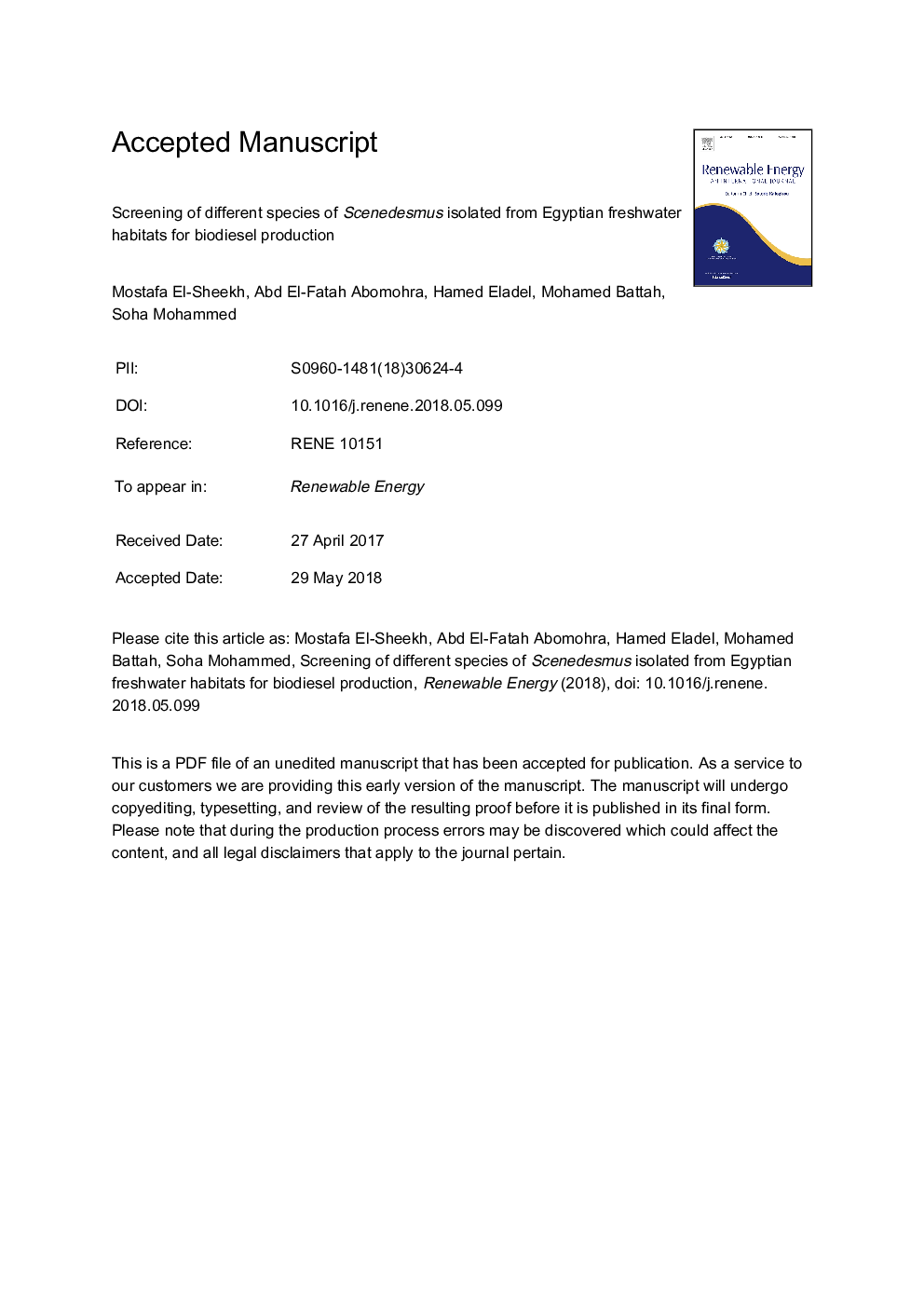| Article ID | Journal | Published Year | Pages | File Type |
|---|---|---|---|---|
| 6763917 | Renewable Energy | 2018 | 22 Pages |
Abstract
Nowadays, microalgae are widely discussed as a promising feedstock for biodiesel production due to the legitimate concerns about the consequences of using edible oils. Selection of the most suitable microalgal species relies on several key parameters such as growth rate, lipid productivity and fatty acid profile. In the present study, different species of Scenedesmus were isolated and compared for their efficiency as biodiesel feedstocks. S. obliquus showed the highest biomass productivity of 0.102â¯g CDW Lâ1 dâ1â¯at stationary phase. However, S. intermedius showed the highest significant lipid content of 400.9â¯mgâ¯gâ1 CDW. Regarding lipid productivity, S. obliquus was the most lipid productive strain at stationary phase with up to 24.94â¯mgâ¯Lâ1 dâ1, representing 23.9% significant increase over that of S. intermedius. In addition, cetane number and iodine value of S. obliquus FAMEs were 54.12 and 110.37â¯g I2/100â¯g, respectively. Moreover, FAMEs of S. obliquus showed kinematic viscosity and specific gravity of 1.9-6.0â¯mm2â¯sâ1 and 0.88â¯gâ¯cmâ3, respectively, which are in accordance with the international standards. Among the different studied species of Scenedesmus, the present study nominated S. obliquus as a promising renewable feedstock for biodiesel production.
Related Topics
Physical Sciences and Engineering
Energy
Renewable Energy, Sustainability and the Environment
Authors
Mostafa El-Sheekh, Abd El-Fatah Abomohra, Hamed Eladel, Mohamed Battah, Soha Mohammed,
